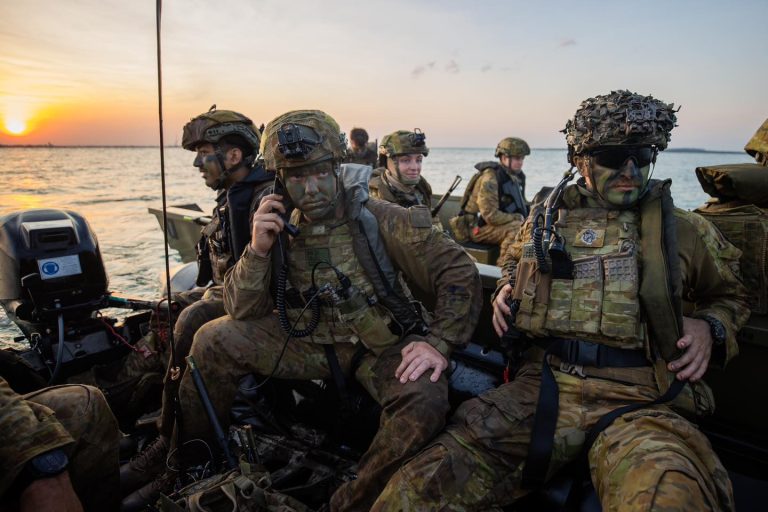As the Antarctic sun barely peeks over the horizon, a mission of utmost importance is about to unfold in the early hours of the Antarctic morning. A C-17 Globemaster has been on a south-west trajectory towards Mawson Station for the past seven-and-a-half hours. As the colossal aircraft approaches, its four engines create a thunderous echo across the icy expanse.
Upon reaching the designated drop zone, the expeditioners on the ground are treated to an awe-inspiring spectacle. “One of the most breathtaking sights in Antarctica is witnessing some 30 parachutes laden with supplies descending from the heavens,” says Dani Yannopoulos, the head of the operations and logistics branch at the Australian Antarctic Division (AAD). “The anticipation of not knowing what’s coming is akin to the excitement of Christmas morning.”
Several months prior, the expeditioners at Mawson Station found themselves with limited supplies after a resupply voyage conducted by the RSV Nuyina encountered difficulties. Issues with the cranes and inclement weather resulted in half the ship’s cargo — which included construction equipment, food, coffee, and personal items — remaining onboard.
Despite the expeditioners being capable of surviving the harsh winter months with the supplies already at the station, a decision was made to replenish their stock. “Our team is incredibly resourceful and can make do with what we have,” Yannopoulos explains. “However, having access to additional comforts certainly enhances morale and makes a significant difference.”
Nonetheless, the task of delivering 14 tonnes of cargo to one of the world’s most remote and extreme environments presented a logistical challenge. “While it may appear effortless as the supplies descend from the sky, the operation involves four to six weeks of meticulous planning,” Yannopoulos reveals. “It’s akin to threading a needle when it comes to the weather, ensuring the wind conditions are favourable, and timing the drop to coincide with the optimal light conditions.”
In the weeks leading up to the C-17’s departure, Defence personnel were hard at work preparing for the complex mission. Initially, parachute riggers and air dispatchers had to ready the cargo in accordance with stringent biosecurity protocols in Antarctica. “We utilise pristine, new equipment, and all the parachutes are brand new to prevent any potential environmental risk to the Antarctic ecosystem,” says Wing Commander Nicholas Fairweather.
Once the pallets were prepared for transport, the plane journeyed from its base in Queensland to Hobart, where loadmasters secured the supplies in its cargo hold. The C-17 then flew to RAAF Base Pearce in Western Australia to await the green light for the final leg of the operation. When the weather conditions were deemed suitable, the aircraft embarked on its voyage to the frozen continent.
“The entire mission spans approximately 14 hours and covers a round trip of just over 10,000 kilometres,” says Flight Lieutenant Nicholas Power. “The aircraft is equipped with bunks, and we have additional crew members, allowing us to rotate personnel in the cockpit to ensure everyone is well-rested for the mission’s critical components.”
Before the plane even reached Antarctica, the crew faced a separate challenge in the airspace high above the Southern Ocean. “The aircraft will be refuelled mid-air by a Royal Australian Air Force KC-30,” explains Wing Commander Fairweather. “This provides the necessary fuel for such an extensive journey.”
Wing Commander Fairweather, the commanding officer of Operation Southern Discovery, which offers logistical support to the Australian Antarctic Program, states that while his team has conducted numerous Antarctic airdrops in the past, it’s crucial to maintain these skills through regular exercises. “These missions present a unique opportunity for us to hone our skills,” he says. “The vast distance is certainly a challenge, and conducting mid-air refuelling is a complex task, but our crews are highly skilled.”
Yannopoulos emphasises the significance of the latest airdrop’s success and the importance of Operation Southern Discovery. “Working in the world’s most extreme environments necessitates having multiple contingency plans. That’s why we have a world-class ship, aviation assets, and strong partnerships with other government departments, enabling us to carry out this airdrop.”



